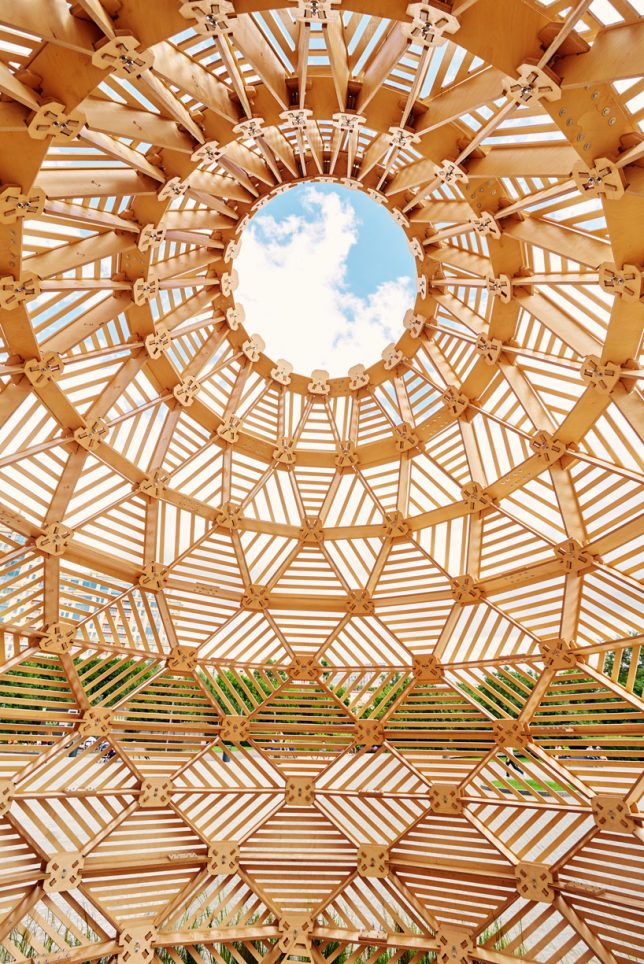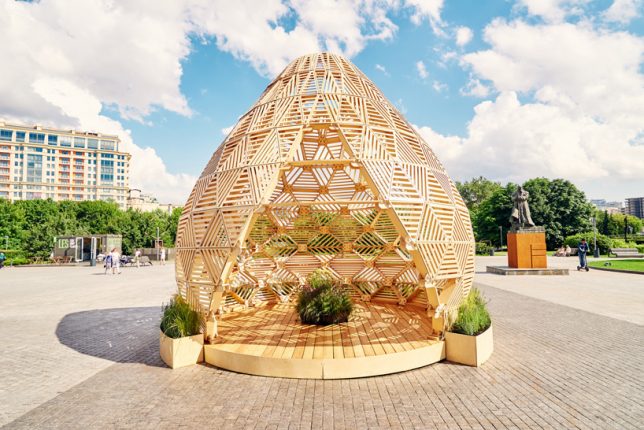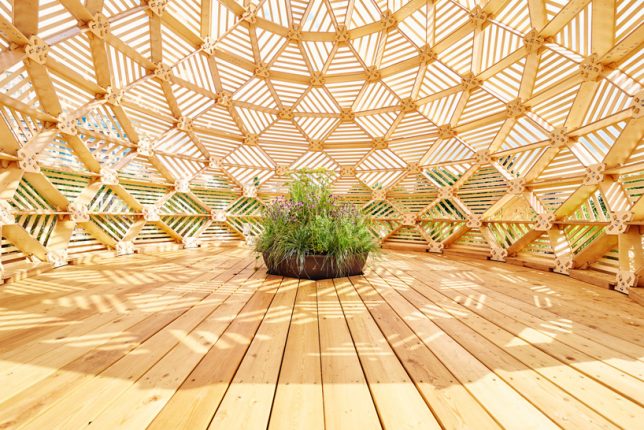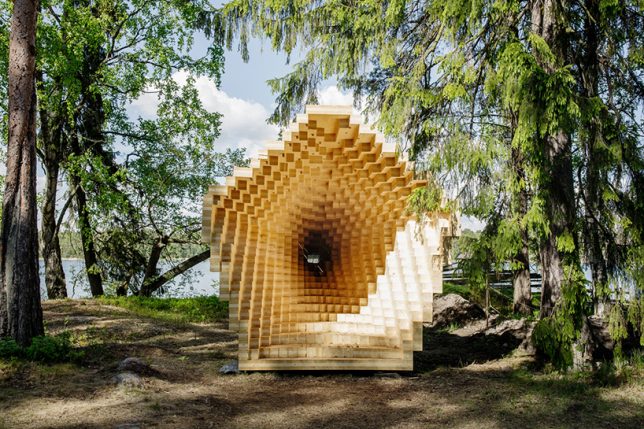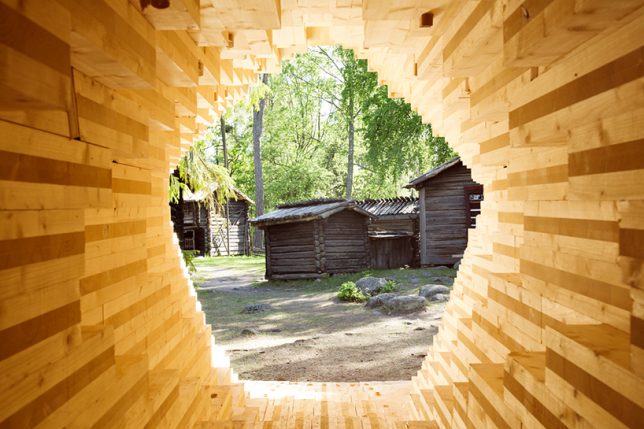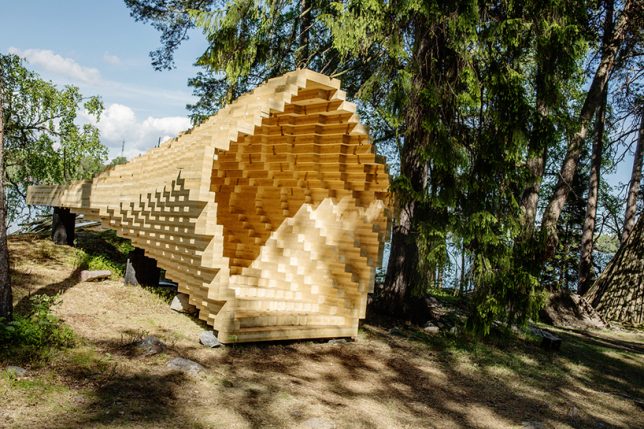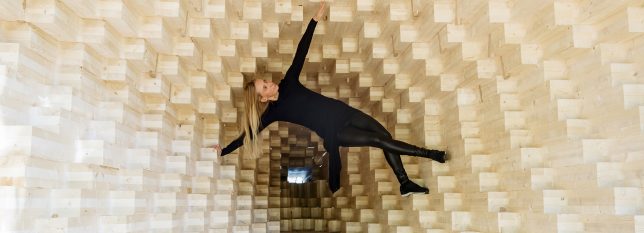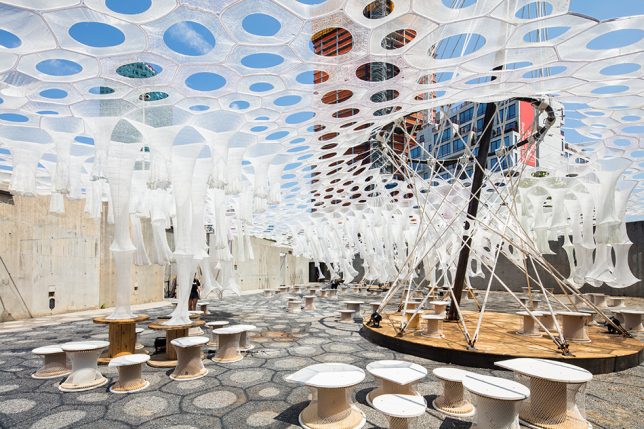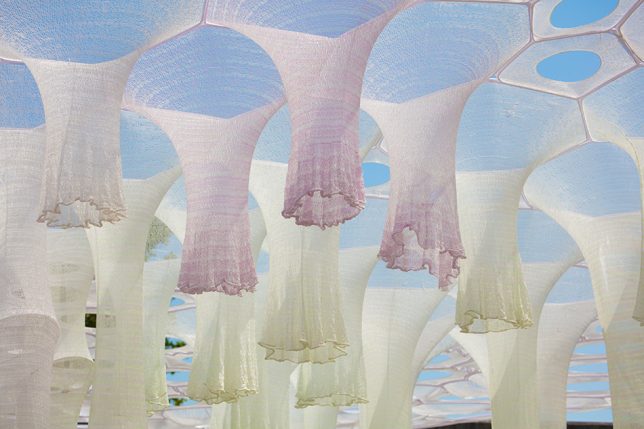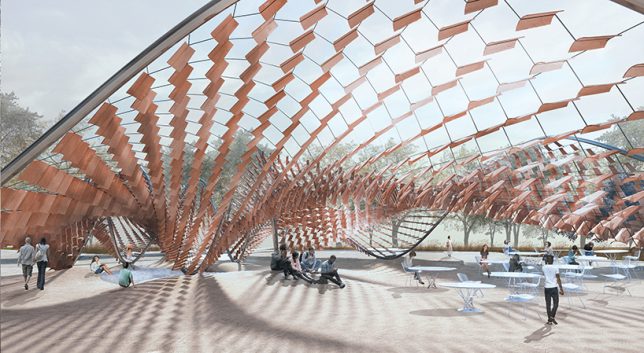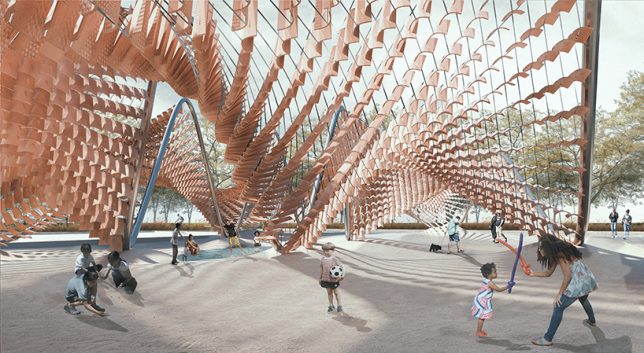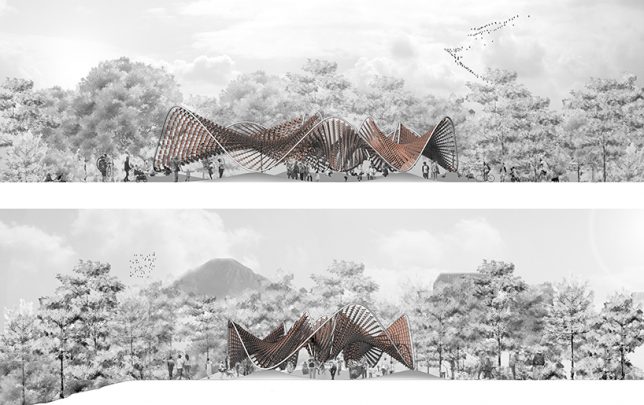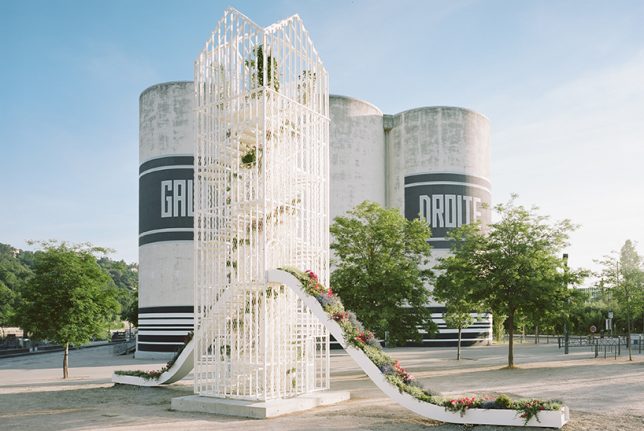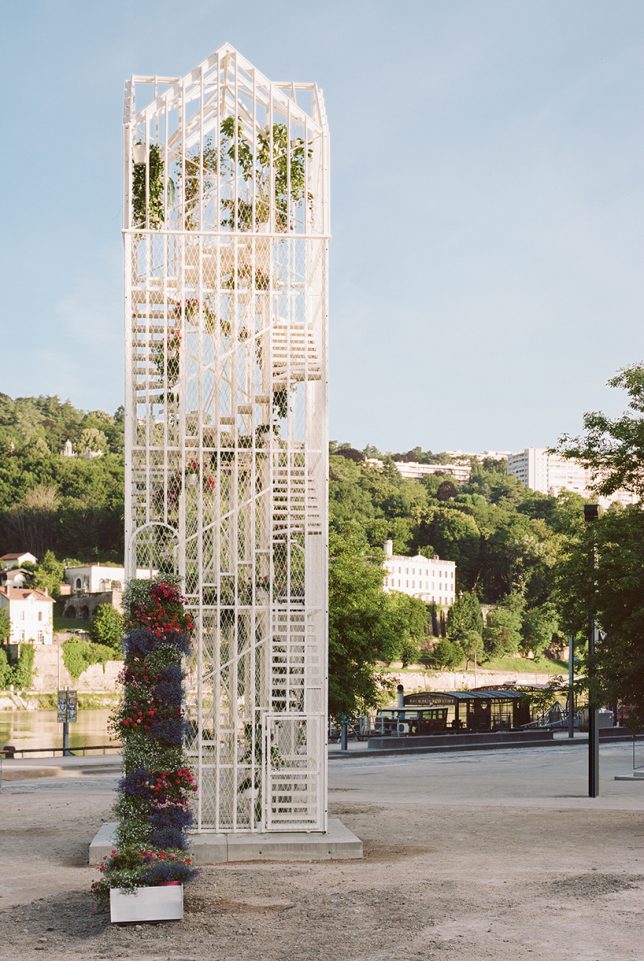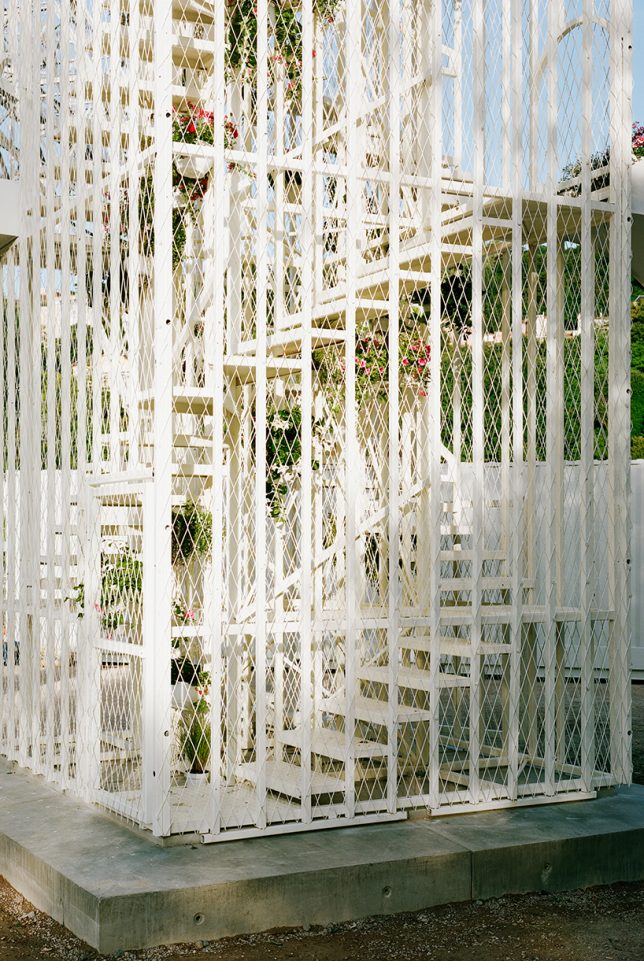Zern Wooden Pavilion in Moscow by Vlad Kissel
This teardrop-shaped pavilion placed in a Moscow square consists of thousands of wood pieces that slot together to create a striking geometric pattern. ‘Zern’ by Vlad Kissel references traditional Slavic architectural typologies while modernizing them, showing how they can evolve in the future. A planter full of flowers at the center sits beneath an oculus, making the pavilion a nice place to retreat from the activity of the city.
Y Pavilion in Helsinki
The funnel-shaped, pixelated Y Pavilion outside the open-air museum of Seurasaari in Helsinki shows off the capabilities of wood and the craftspeople who work with the material. Created by a team of architects and woodworkers, the pavilion invites people to penetrate it as deeply as they can. “Tradition is born out of the continuous sharing of knowledge and skills – the conjunction of the new and the old,” say the creators, referencing the collaboration between architects and carpenters.
Lumen in New York City by Jenny Sabin
Robots wove this temporary pavilion made of over 1,000,000 yards of knitted recycled fibers. Created by Jenny Sabin Studio, the interactive structure was placed in the courtyard of New York’s MoMA PS1, misting visitors to keep them cool in the hot summer months. 250 tubular structures dangle from the ‘ceiling’ of the installation, glowing after dark. Sabin’s work takes inspiration from a variety of fields, including biology, mathematics and engineering.
Flocking Tejas Pavilion in Chile by BASE Studio
BASE Studio presents ‘Flocking Tejas’ as an adaptable handcrafted architectural system that’s easy to replicate and can be arranged in all sorts of different ways to fit various settings and usages. Located in Chile, the pavilion takes its structural inspiration from flocks of birds, with the components working together in an ‘intuitive’ fashion.
Flower Pavilion in Lyon by Laisne Roussel
Inspired by greenhouses, this multi-level inhabitable installation by Laisné Roussel allows visitors to climb several flights of stairs and gaze out at the city of Lyon. Set in place during the city’s first architectural biennale, the pavilion features a double-spiral staircase, vertical gardens and two ‘flower slides.’
